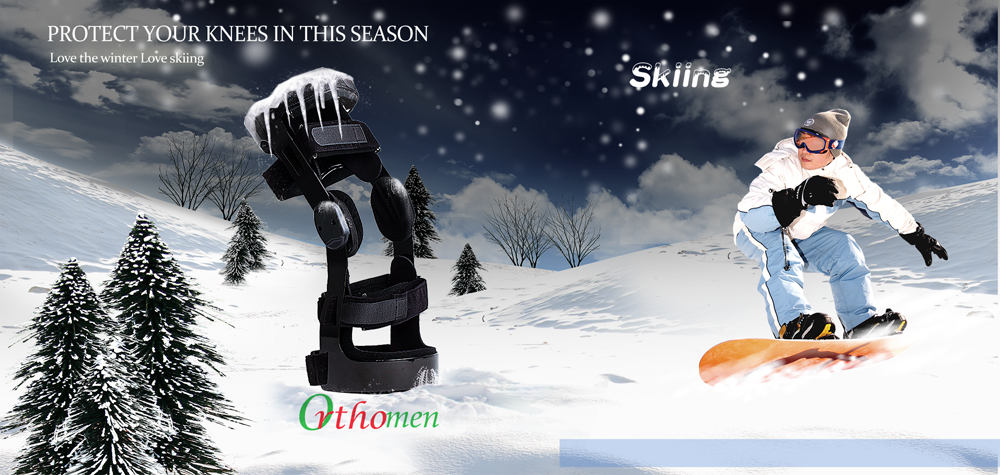ALL ABOUT SKIING & SNOWBOARDING INJURIES
When it comes to alpine sports, snowboarding provides plenty of thrills as well as risks. Injuries are common, especially in beginners and those pushing the limits. While wrist injuries are most common, your knees are also susceptible to injury. Surprisingly, just getting on or off the chairlift puts your knees at risk. Overuse can also strain tendons while jumps, tricks and collisions can stretch or tear crucial ligaments in the joint, leading to pain.
Ski and snowboard injuries happen if you fall incorrectly, have equipment issues, turn wrong, or overuse the muscles. Here's the good news, these injuries can be prevented. If you're injured, you can recover quickly, getting back onto your skis or snowboard in no time.
WHAT CAUSES COMMON SNOWBOARDING INJURIES?
Snowboarding without rest/Fatigue
Snowboarding at a higher skill level
Improper equipment
Dehydration
ANKLE SPRAINS
There are a number of variables that can cause an ankle sprain, from wrong boots and bindings to overuse of the ligament and fall. An ankle injury can occur from a bad landing after a jump when excessive pressure and inversion is applied to the cluster of small bones in the foot and the ankle joint. To prevent ankle injuries, make sure the ankle does not move in the boot, which should fit snugly. Soft boots increase maneuvering capacity as well as risks of injury. Hard boots provide enhanced ankle support and are usually worn by racers. Hybrid boots are becoming very popular for the advantage of reducing the risks of injury while offering certain flexibility.
When an ankle injury happens, it's important to reduce the swelling and compress the injury. Once inflammation has subsided, using an ankle support and doing ankle exercises can help speed up recovery.
To help prevent ankle injuries on the slopes, you can do ankle-strengthening movements to get the body strong enough for that type of movement on the mountain.
OVERUSE INJURIES
When gliding down the slope, your feet are firmly attached to your snowboard. Your knees are typically bent, helping to absorb shock as well as promoting the movements of your lower legs. When your knees are bent, you put more stress on your quadriceps -- or front thigh muscles -- which attach to your knee joint via the quadriceps tendon. Overuse of this muscle and tendon can lead to inflammation, eventually causing knee pain. Likewise, other movements you perform while snowboarding, if your muscles are not in shape, can stress tendons in your knees. Performing sport-specific exercises and stretches can help prevent overuse injuries.
SHOULDER DISLOCATIONS
Mainly due to landing the wrong way, shoulder dislocations, fractures or separations occur. Learning to fall properly helps in avoiding shoulder injuries such as dislocation or fracture.
Try doing sport-specific movement that mimics falling so you can prepare the body and react quickly if you need to fall. Wearing shoulder protection can help prevent injury.
WRIST, HAND OR THUMB INJURIES
One of the most common snowboarding injuries is a wrist fracture. Snowboarders' wrists are broken when they fall on their outstretched hands. The pressure on the wrist bones is too great and these consequently break. Wrist sprains can also occur, where the ligaments are torn. Wearing wrist guards can help prevent wrist fractures and sprains. Keeping the hands in a fist position can also help with sprains.
KNEE JOINT INJURIES
Knee injuries are by far the most common injuries suffered by skiers. Although the advancement in ski fabrication technology has helped make knee injuries not as common as they once were, downhill skiing always presents risks of knee injury.
Understanding your knee joint and its range-of-motion is important for prevention of and recovery from injury. Your knee joint consists of four bones and an intricate network of tendons, ligaments and muscles that flex and extend your leg. You have cartilage pads in between bones, called a meniscus, to allow your bones to glide without rubbing. The muscles in your upper and lower legs -- including your quadriceps, hamstrings and calves -- power your movement and majorly contribute to the joint's overall strength. Various ligaments hold your bones in place while tendons attach muscles to bones. Injury to any part of the joint can cause pain and decrease your range-of-motion.
Knees are one of the primary joints to be injured because they sustain the most pressure and weight when skiing or avoiding falls and collisions when the body is propelled at high speed. When the ski is torqued but does not release, the knee joint sustains the most force. Knee pain from skiing is often mild, but an acute pain can mean torn ligaments leading to permanent damage. Knee injuries can be avoided by wearing knee support for skiing. Skiing knee supports like the Orthomen ACL knee brace can help a skier enjoy skiing after sustaining a knee injury.
INJURY PREVENTION
Maintaining adequate strength and flexibility in your leg muscles can help prevent overuse injuries. Use caution getting on and off the chairlift to avoid twisting your joint excessively. Whether you are performing tricks or just strapping a board on your feet for the first time, learn proper technique from an instructor. Understanding the nuances of the sport can help prevent falls and accidents.
To help shun knee injuries, good knee pads can be worn. Also, well-fitting equipment for size and weight can significantly decrease the possibility of injuries from snowboarding.
- Choosing a selection results in a full page refresh.

